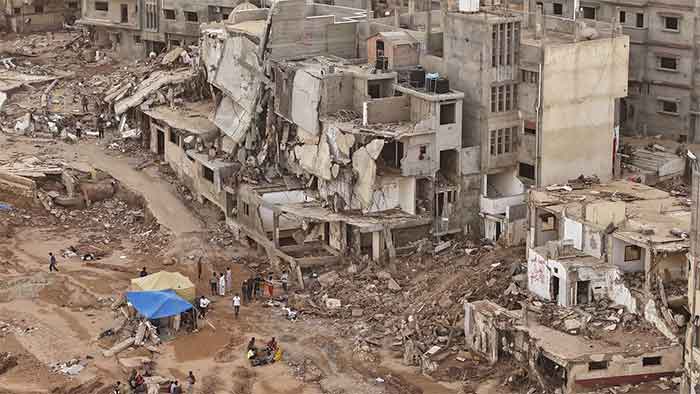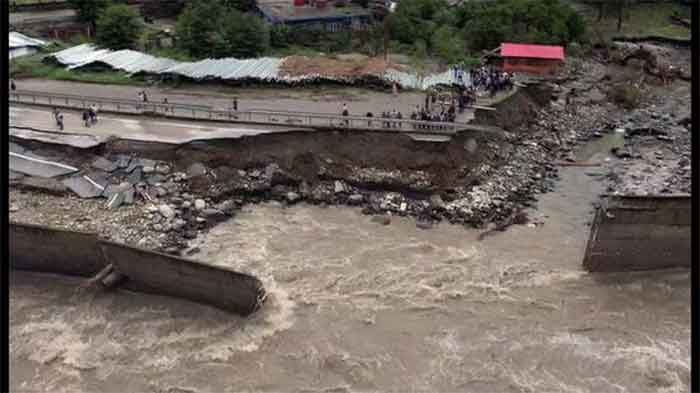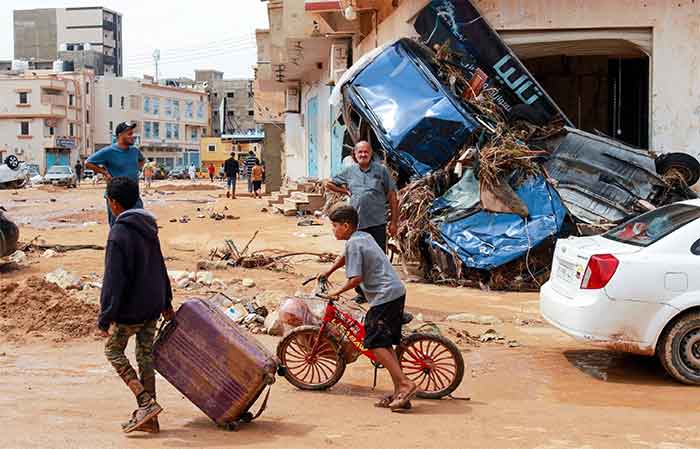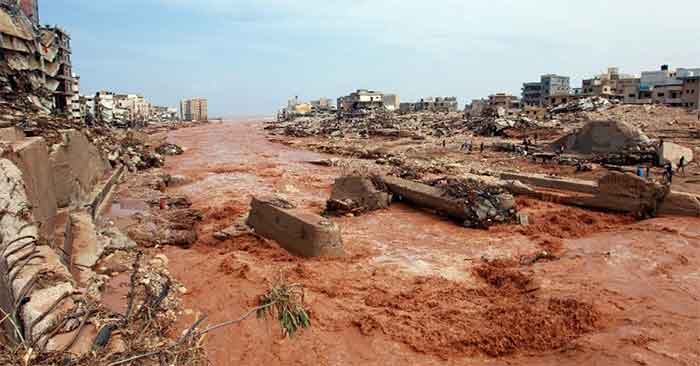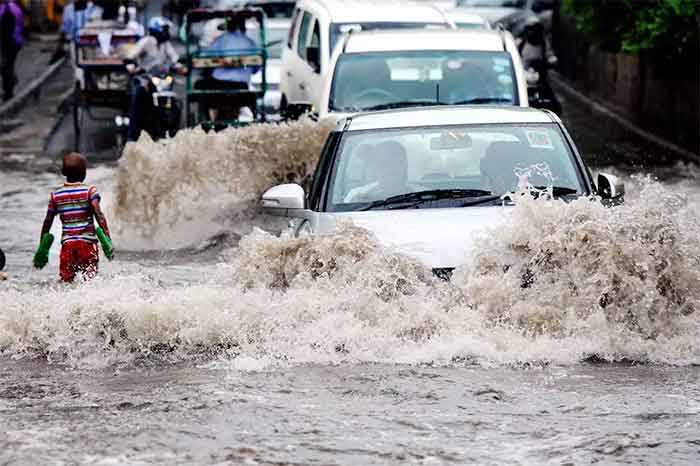
Paradoxically, recent past has been witness to strongly different images of India circulating at home and also in global media. Incidentally, lesser space has been taken by the positive side than has been by negative aspects and/or the grimmer reality. Of course, as is well known, the former has been marked by Indian Premier’s foreign trips followed by India’s moon mission and barely visible space accorded to this country’s desire to try convincing its “friends” to accept Indian trade in rupees. The other that of India’s capital city facing the fury of floods dominates national media. Substantial attention is being given to it internationally too, in addition to their taking note of tomatoes’ price and Manipur crisis. From one angle, there is nothing surprising about this as the tendency to accord substantial coverage to “negative” news about India has always prevailed. What is perhaps intriguing, at present, is that notwithstanding whatever is presumed “great” about Prime Minister Narendra Modi’s diplomatic “glory,” its coverage appears to have sunk at least a little by news about flood. And this is just one of the several striking factors about probably the message conveyed by floods.
It is not simply the question of a part of India being affected by floods. It is India’s capital city, from where the Union Government functions. Of course, statistics are being handed out about heavy rainfalls coupled with politicking holding rival parties as responsible for floods bringing life in parts of Delhi to almost a standstill. If India can reach for the moon, why cannot it be prepared to tackle when and if River Yamuna crosses the danger mark? The problems being faced by people directly affected by floods, include lack of shelter, food, electricity, drinking water, toilet and other civic amenities as reported by various outlets of media. Certainly, this year the situation is far more severe than it has been in preceding years. But each monsoon is also marked by people living on banks of Yamuna being forced to shift to higher levels to escape the swollen river. In view of attention being paid to severe impact of climate change and this issue being apparently discussed at diplomatic levels, one wonders why hasn’t substantial attention being paid to tackle it at the grass-roots? Questions about whose political logistics have erred where cannot be ignored. It is hoped, prior to monsoon displaying its fury in the coming years, ample attention is paid to taking measures to check the same.
With respect to media-coverage, this seems to be one of those phases when “real news” has definitely pushed practically all other “news”- whether described as rhetoric, fake, manufactured, propaganda, claims, promises and other such factors – to sidelines. Floods are a harsh and hard reality that have not escaped direct coverage of media as well as lives of people affected by the same. This point is being made in context of Indian media facing strong criticism for being subject to pressures from several quarters, including political, commercial and social. Of course, it cannot be ignored that reports about Delhi being flooded have also been subject to a degree by political pressure at certain levels. This refers to state governments being specifically blamed by several politicians as being responsible for “flooding” Delhi, not being able to control floods, paying inadequate attention to such a situation and so forth. Perhaps, this aspect is subject to which political section has greater say in which outlet of media. Nevertheless, communication boom, frenzy to stay in lead and reach large sections of people has apparently guided most outlets of media- with eye on commercial gains- to remain flooded by news on Delhi-floods.
Ironically, news about flood not sparing several government buildings, certain posh areas, cars being swept by, in addition to spelling disaster for those living near Yamuna banks conveys a very strong message. Nature’s fury has not spared either the rich or poor. Nor has it shown any distinction because of people’s religion, caste, class or difference along any other line. The same can be said about inflation’s impact- as marked by tomatoes’ price at present. Consumption of this vegetable is probably not refrained by any social restriction. Medical reasons may guard a few against this. Nowadays, its price has pushed it off the dishes of majority in India. This is another hard-hitting reality which has commanded media attention without apparently being subject to any pressure tactic.
One may draw attention to a politician blaming a minority community for tomatoes’ price. What does this really suggest? His desperate attention to gain media coverage and gain favor of his communally bent, extremist seniors. In all probability, yes. This is just a minor semblance to the manner in which during the initial phase of Covid, attempts were made to target minorities. True, some sections are still provoked and/or paid to target minorities and their places of worship. With parliamentary elections not too far, probability of this strategy being engaged in at various levels cannot be ignored. In this context, it is hoped, the impression left by floods’ fury, impact of tomatoes’ price and attention paid to Indian human rights in international circles is not ignored.
Communal jargon, politicking of any nature, discrimination, rhetoric, media-hype, image-boosting and other such moves can excite/provoke but not check nature’s fury, economic woes as well as distress caused by the same. Certainly, manufactured and/or manipulated “news” can play some role in trying to spread that which is desired by various leaders. But now people- the recipients- have begun differentiating between what is real news and that which is manufactured. The majority don’t want their own lives to be affected adversely by negative strategies, deliberately promoted for the sake of political gains. And when impact of communal news directly affects majority along negative lines, they really don’t wish to fall victim to this trap. True, chances of communal “news” being deliberately manipulated cannot be ignored. There is a difference between “news” being manufactured and real news actually affecting people. Surely, the whole world, including ones with whom Indian premier is believed to share “good” diplomatic vibes with, media and those directly affected by the same cannot be expected to remain oblivious of the latter. Be it the case of Delhi facing floods, Manipur crisis and/or of tomatoes’ price, what has commanded attention and also raised global eye-brows is the grim reality of people facing the brunt. Politically, hopefully some view it as their litmus test!
Nilofar Suhrawardy is a senior journalist and writer with specialization in communication studies and nuclear diplomacy. She has come out with several books. These include:– Modi’s Victory, A Lesson for the Congress…? (2019); Arab Spring, Not Just a Mirage! (2019), Image and Substance, Modi’s First Year in Office (2015) and Ayodhya Without the Communal Stamp, In the Name of Indian Secularism (2006).

